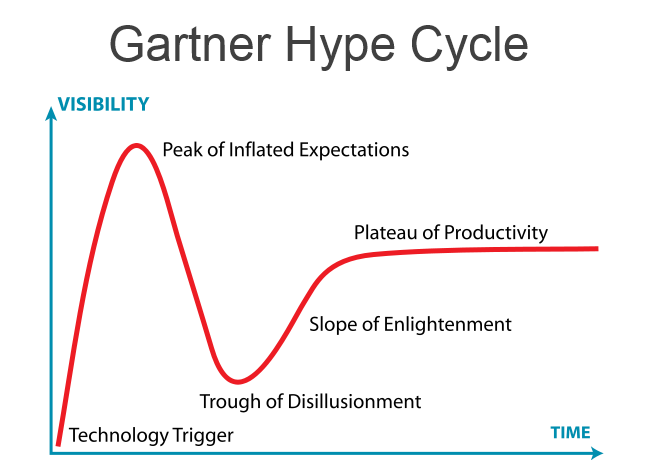|
Times of acute discord can provide unique opportunities for examining the benefits of core values like tolerance. Tolerance education can be highly beneficial for maintaining a harmonious and productive atmosphere within schools and workplaces. To teach tolerance in any setting, start by defining the term, and establishing the significance of tolerance as a virtue and as a practical functional capability for individuals and groups. First, the definition: tolerance: a willingness to accept behavior and beliefs that are different from your own, even if you disagree with or disapprove of them Note that tolerance implies some form of opposition or conflict. If we agree with a particular person, or are apathetic to an idea, there is nothing to "tolerate." Tolerance requires restraint, and putting up with our own discomfort. As we broaden our understanding of tolerance, we can see and explore links to other concepts, such as fairness, justice, compassion, and love. Tolerance has been promoted as a civic virtue since the 17th century, when John Locke identified it as a key component of equal rights within a society. It has become a core American value, codified within our Constitution and our system of laws. We view and admire the personification of tolerance in figures such as Martin Luther King Jr. and Gandhi. Tolerance is also a shared value internationally. UNESCO provides perhaps the most useful definition of tolerance, as guiding social principle, in its 1995 Declaration of Principles of Tolerance: 1.1 Tolerance is respect, acceptance and appreciation of the rich diversity of our world's cultures, our forms of expression and ways of being human. It is fostered by knowledge, openness, communication and freedom of thought, conscience and belief. Tolerance is harmony in difference. It is not only a moral duty, it is also a political and legal requirement. Tolerance, the virtue that makes peace possible, contributes to the replacement of the culture of war by a culture of peace. UNESCOs definition is so useful because it recognizes the potential pitfalls of tolerance, alongside the benefits. It recognizes that there are limits to what should be tolerated. When we teach tolerance, we can work with learners to explore and define these limits.
It is important to note that tolerance is not merely an idealistic moral principle. It is also a practical, effective capability within groups and societies to get optimal results. In short, tolerance is a best practice for success in education and in business. From a practical perspective, tolerance helps us live and work together, enhancing harmonious interaction and productive relationships. For schools, tolerance education creates more open learning environments, especially for disadvantaged learners. Moreover, it teaches all students how to function most effectively in a diverse world. For companies, workplace training can lead to improved communication and a more cooperative employee group, with resulting benefits to productivity. Tolerance training also reduces employee conflict, and the potential liability associated with this conflict. Looking at some resources,
0 Comments
One substantial benefit of educational technology is the broad expansion of active learning options available to educators and students. Active learning allows students to engage and interact with educational content, through problem-solving, reading, writing, speaking, listening, collaborating, simulating, and performing activities. By definition, active learning is defined by student participation in the learning process. In comparison to lecture-based education, active learning has been shown to improve educational results in numerous studies. The underlying advantages are generally intuitive, and mostly uncontroversial, but are nonetheless worth examining. Looking at lecture-based instruction, we know that most students have trouble assimilating concepts during lectures. Recent studies show that students only hear approximately half of the words spoken by the instructor, with this percentage decreasing as the lecture proceeds over time. By adding visual aids, retention improves by 14-38 percent. Today's universities tend to record lectures, so student's can review course lectures as many times as they like, improving retention rates. Of course, this review process is, in itself, a form of active learning. Perhaps the most cited recent scholarly study on active learning was published in 2014, in Proceedings of the National Academy of Sciences. Most notably, the study showed that active learning students achieved test scores that were 6% higher than their counterparts in traditional lectures. Moreover, the lecture-based students were 1.5 times more likely to fail the course. Looking beyond this recent study, academics have been evaluating the active learning model for decades. In a 2004 review of the research, Bucknell University's Michael Prince concludes, "...the empirical support for active learning is extensive. However, the variety of instructional methods labeled as active learning muddles the issue." Prince delves into statistical results for a variety of active learning approaches, with this interesting summary: What do these results mean in real terms instead of effect sizes, which are sometimes difficult to interpret? With respect to academic achievement, the lowest of the three studies cited would move a student from the 50th to the 70th percentile on an exam. In absolute terms, this change is consistent with raising a student’s grade from 75 to 81, given classical assumptions about grade distributions.* With respect to retention, the results suggest that collaboration reduces attrition in technical programs by 22 percent, a significant finding when technical programs are struggling to attract and retain students. Furthermore, some evidence suggests that collaboration is particularly effective for improving retention of traditionally under-represented groups. So again we see the 6% difference in test scores.
Taking a look at some practical applications of active learning:
Yesterday, Harvard and MIT released a new report: HarvardX and MITx: Four Years of Open Online Courses. Their study takes a look at participation and online learner behavior in MOOCs run by the two universities. Besides noting the steady growth in MOOC participation, the study provided some telling information on student demographics: Demographic statistics of note include a median learner age of 29 years old, a 2:1 male-to-female ratio (67 percent male, 33 percent female), and significant participation from learners in other countries (71 percent international, 29 percent from the United States). One takeaway: MOOCs are increasing the availability of high quality education to a wider audience throughout the world. The gender disparity likely has some relation to the types of subjects that are popular. Computer science courses are the hubs of the MOOC curricular network. Tracking participants who enroll in multiple courses over time reveals networks among courses and curricular areas. The new report found MITx and HarvardX computer science courses are the “hubs” of the network. These courses are the largest (compared to science, history, health, and other subjects) and route more participants to other disciplinary areas than they receive. Women earn approximately 18 percent of undergraduate computer science degrees, thus the MOOC imbalance. The Economist also published an article on MOOCs this week, Established education providers v new contenders. The article notes that despite the initial promise, "Now MOOC sceptics are more numerous than believers. Although lots of people still sign up, drop-out rates are sky-high." This is the Gartner Hype Cycle in action, from the Peak of Inflated Expectations to the Trough of Disillusionment. Last week, we noted in this blog that personalized and adaptive learning models are starting to see positive learning outcomes. It looks as though MOOCs are also starting to climb the Slope of Enlightenment. From The Economist article: Nonetheless, the MOOCs are on to something. Education, like health care, is a complex and fragmented industry, which makes it hard to gain scale. Despite those drop-out rates, the MOOCs have shown it can be done quickly and comparatively cheaply. The Khan Academy has 14m-15m users who conduct at least one learning activity with it each month; Coursera has 22m registered learners. Those numbers are only going to grow. FutureLearn, a MOOC owned by Britain’s Open University, has big plans. Oxford University announced in November that it would be producing its first MOOC on the edX platform. Education is still in the early stages of large-scale disruption. For one thing, the modularization and democratization of education seems to be driving a trend from theoretical to practical, toward learning that will be professionally useful. This would seem to be a natural evolution, as students gain increasing control over the course options available to them.
For companies looking at digital training solutions, educational outcomes can have a big impact on the bottom line.
Compliance, sales, skills: business leaders can certainly enhance the value and performance of an organization through effective training. But, all too often, workplace training fails to result in lasting benefits. For businesses, it’s essential that employees do not simply forget training immediately after it’s given. Training Suggestions To implement truly effective workplace training, we have a few suggestions:
There is a clear trend toward using meditation and mindfulness practices in schools, both for students and for professional development. The benefits include improved concentration, cognitive performance, and greater capacity for compassion, all of which are helpful during learning and teaching. In "Evidence for Mindfulness: Impacts on the Wellbeing and Performance of School Staff," Emeritus Professor Katherine Weare of the Universities of Exeter and Southampton looks at peer-reviewed studies, showing substantial benefits, including
In the Holistic Me program at Coleman, “which focuses on prekindergarden through fifth-grade students,” administrators already noticed a difference in the first year. “Instead of the students fighting or lashing out,” says principal Carlillian Thompson in the video above, they started to use words to solve their problems.” None of the students in the program have received suspensions or detentions, and many have become leaders and high achievers. Crooked Creek Elementary School in Indianapolis has a similar program: It might sound strange, but in a fast-paced classroom, teachers at Crooked Creek say just having their students close their eyes and listen for a minute can help them improve their ability to focus. It’s part of the school’s efforts to incorporate the tenets of the growing academic field known as “educational neuroscience” into the classroom. And at Visitacion Valley Middle School in San Francisco: In 2007 a meditation programme called Quiet Time was brought in to meet some of these challenges. “When I first heard about it I thought it probably wasn’t going to work,” says O’Driscoll. “We get thrown a new thing every couple of years so I didn’t put too much faith in it.” But in April, just a month after meditation began, teachers noticed changes in behaviour. “Students seemed happy,” says O’Driscoll. “They worked harder, paid more attention, were easier to teach and the number of fights fell dramatically.” These are some compelling stories! For educators thinking of implementing meditation or mindfulness practices in their schools, here are a few links to check out:
Edutopia: Resources & Downloads for Meditation in Schools Mindful Teachers: Mindfulness Activities and Teaching Resources Mindful Schools: Resources to Introduce Mindfulness to Schools To get us feeling like Indiana Jones going into the weekend, here are a couple of fantastic archaeology stories. Both describe intriguing discoveries, made all the more interesting by the people who found them. First is this BBC story about Stuart Wilson, a 37-year-old from Wales who used his £32,000 life savings to buy a 4.6 acre field in Monmouthshire. Wilson "was convinced he had located the site of 13th Century Trellech - once Wales' largest city." It turns out he was right. Now, 12 years later, he believes he has revealed the footprint of a bustling iron boom town from the 1200s - and he does not regret his decision. Wilson essentially has taken a vow of poverty to excavate this lost city. Impressive dedication! Looking now to Greece, Smithsonian Magazine gives us an update on the warrior grave that was found in Pylos last year, and sets the scene of the discovery: The season had not started well. The archaeologists were part of a group of close to three dozen researchers digging near the ancient Palace of Nestor, on a hilltop near Pylos on the southwest coast of Greece. The palace was built in the Bronze Age by the Mycenaeans—the heroes described in Homer’s epic poems—and was first excavated in the 1930s. The dig’s leaders, Jack Davis and Sharon Stocker, husband-and-wife archaeologists from the University of Cincinnati, in Ohio, had hoped to excavate in a currant field just downslope from the palace, but Greek bureaucracy and a lawyers’ strike kept them from obtaining the necessary permits. So they settled, disappointed, on a neighboring olive grove. They cleared the land of weeds and snakes and selected a few spots to investigate, including three stones that appeared to form a corner. As the trench around the stones sank deeper, the researchers allowed themselves to grow eager: The shaft’s dimensions, two meters by one meter, suggested a grave, and Mycenaean burials are famous for their breathtakingly rich contents, able to reveal volumes about the culture that produced them. Still, there was no proof that this structure was even ancient, the archaeologists reminded themselves, and it might simply be a small cellar or shed. The entire in-depth article is fascinating, so check it out!
Today we are going to look at fake news, and ways that educators can help students evaluate the credibility of published content. First, it is worth noting the degree to which educated people can be duped by fake news. A recent Stanford Graduate School of Education study shows: ..a dismaying inability by students to reason about information they see on the Internet.... Students, for example, had a hard time distinguishing advertisements from news articles or identifying where information came from. Note that people had trouble evaluating content credibility at all educational levels, including students at Stanford University. So we cannot place blame on lack of education. We can, however, use education to combat the trend toward an Orwellian "post-truth" world. Incidentally, "post-truth" was named as 2016s word of the year by Oxford Dictionaries, with the following definition: “relating to or denoting circumstances in which objective facts are less influential in shaping public opinion than appeals to emotion and personal belief.” The dangers, of course, are most acute when it comes to the integrity of our political system, and at the intersection of public and corporate interest. This inability to judge truth from fiction has implications ranging from an individual to societal level. If "post-truth" is the word of the year, it is a sad commentary on the state of our public discourse. The word of the year should be a wake-up call to educators and concerned citizens everywhere, regardless of political affiliation.. Fortunately, many teachers are answering the call. For those interested in teaching about media awareness and critical thinking, here are a few resources for lesson plan development:
Michael Lynch, a philosopher who studies technological change, observed that the Internet is “both the world’s best fact-checker and the world’s best bias confirmer—often at the same time.” Never have we had so much information at our fingertips. Whether this bounty will make us smarter and better informed or more ignorant and narrow-minded will depend on our awareness of this problem and our educational response to it. At present, we worry that democracy is threatened by the ease at which disinformation about civic issues is allowed to spread and flourish.
Fake news is no longer a matter of the occasional hoax. There is growing evidence that fake news has the power to shape public opinion and even sway elections. As more Americans get their news online, it is increasingly vital that students know how to verify sources and spot fake news or images, which often appear indistinguishable from a reliable source. This lesson asks students to analyze the consequences of fake news and build the skills needed to question and verify what they view online.
Here's a video of a lecture by Dan Whaley, CEO of Hypothes.is. It's thought-provoking, so give it a watch: EdSurge has a good recent article by Sal Khan on the intersection of mastery learning and technology. As Kahn defines the term, "Mastery learning is the idea that students should adequately comprehend a given concept before being expected to understand a more advanced one." One goal of personalized and adaptive learning technologies is to provide reactive instruction, to the degree possible giving students the specialized attention that might be otherwise afforded by a tutor or teacher. Now with software, we can begin to deliver on Benjamin Bloom’s dream: help teachers identify and meet the needs of each student so that all students can master important concepts. Too often, students struggle in calculus due to gaps in their algebra skills, or in algebra because they never fully mastered fractions. A tool like Khan Academy can provide students with unlimited practice and instructional support for each skill so they can be sure they’ve truly mastered a concept before moving on. And we offer teachers data on how their students are doing so they can identify gaps and provide tailored instruction. That way they can spend less time making differentiated worksheets for each student and more time interacting with and inspiring their students. After all, nothing beats getting more quality time with an incredible teacher. Audrey Watters gives us a nice overview of the main players in adaptive technology in "What Should School Leaders Know About Adaptive Learning?" Her post is a couple of years old, but still looks relevant, including this definition of adaptive learning: The term “adaptive” actually covers a number of characteristics in software (indeed, the term is applied quite liberally in marketing new tools). Traditionally, adaptive learning tools focus on the following components (PDF): “monitoring the activities of its users; interpreting these on the basis of domain-specific models; inferring user requirements and preferences out of the interpreted activities, appropriately representing these in associated models; and, finally, acting upon the available knowledge on its users and the subject matter at hand, to dynamically facilitate the learning process.” Critics are often heard to complain that all of this investment in technology has yet to yield positive quantifiable results. For example, a June 2016 article by Blake Montgomery looks at a Harvard study of Dreambox Learning, and the broad initial statement is similar: "There is little evidence yet that educational software is actually helping students progress more rapidly." But from there things start to get much more positive. In particular: 1. Students who spent more time on the DreamBox software saw larger gains in achievement, and those who followed the company's lesson recommendations saw faster gains.DreamBox operates by engaging students in math lessons, gauging their progress then recommending other DreamBox lessons in order to, theoretically, optimize mastery. Following these suggestions, Harvard found, helps students more so than repeating previous lessons. So perhaps we're starting to turn the corner with respect to achieving significant measurable results from EdTech.
|
Intelligence AmplifiedArchives
April 2023
CategoriesRead our magazine on Flipboard!
|







